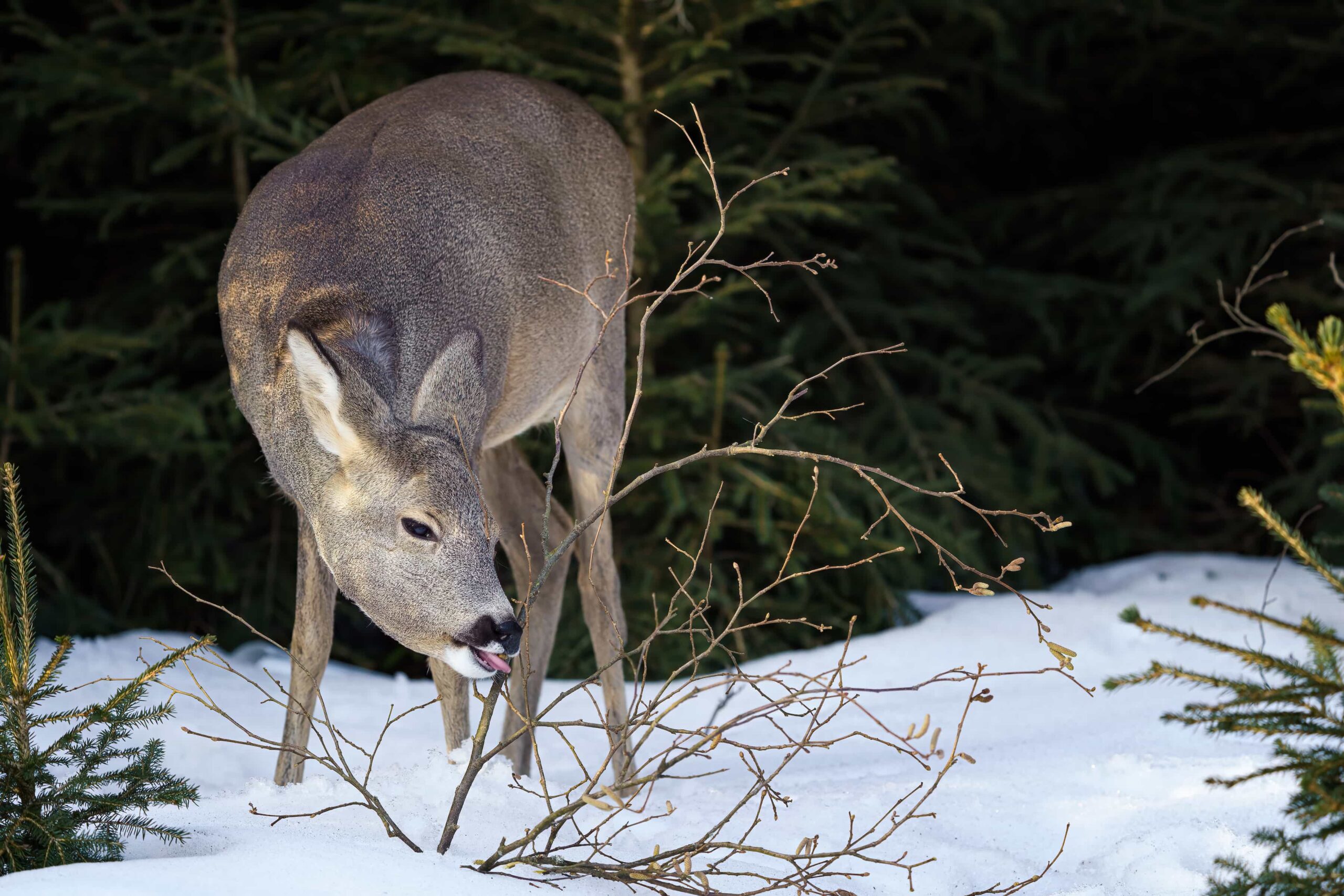What Do Deer Eat in Spring?
Deer nutrition varies through the seasons. While there is plenty of fruit, plants, and vegetation for them to eat from summer until autumn, winter and early spring don’t offer a great variety in terms of available nutrients and protein intake.
That’s why, providing good, nutritious food sources for deer in spring will help them grow strong and expand the herd.
Deer know when spring is around the corner: the days grow longer while small blades of grass slowly peep out of the snow. Snow starts melting and more weeds start to show.
However, the available spring natural vegetation is not sufficient for deer to build up their weight at a time when bucks must grow their antlers and does need to feed their young ones.
If you want your wildlife orchard to attract and keep deer, you need to provide them with tasty, deer-preferred food sources that will keep them coming again and again to your land.
Winter Is Challenging for Deer
During winter, deer lose up to 25% of their weight as they have very little food around. The ground is covered in snow and deer find it difficult to move around. If winter is too harsh and extends for a long time, deer have very few food sources; mainly wood bark and what little winter vegetation may be available to them.
As a result, deer limit their activity levels in winter to lower their energy needs. However, if they get scared or face unexpected events like encountering humans or other animals, they will run away, thus using up much-needed energy.
As winter draws to an end, deer are tired, hungry, and in desperate need of food. Even though deer are strong and adjustable, winter can be a testing time. Older, sick, and injured deer often fail to make it to spring.
Throughout winter, what matters to deer is survival, pure and simple. Come spring, however, it’s time to rebuild muscle and grow again. Deer are now looking for protein-rich nutrition to sustain themselves. Unfortunately, natural vegetation is still limited: grasses are just growing and trees have not produced any fruit yet.
What Do Deer Eat?

The main food source for deer is leaves and twigs of woody plants that are at their height level, as well as vines, weeds, and mushrooms. However, in early spring, most deer can only find some wildflowers, tender grasses just shooting out of the ground, and a few dandelions.
Natural vegetation contains very little protein, around 9%, when deer need an optimal level of 15 to 17% protein in their spring nutrition to rebuild their weight.
That’s where a food plot comes in handy. A food plot offers deer supplemental food when native natural vegetation is neither abundant nor nutritious enough.
As a general rule, deer love oats, wheat, red clover, and chicory. These average around 20% of protein, offering deer plenty of nutrients exactly when they need it. Your spring food plot plants should be easily digestible and full of protein. If you select the right plants for your area, the deer herds in your area will not just survive but thrive.
How Spring Food Plots Help Your Deer Thrive
By planting a spring food plot with carefully selected plants and vegetation, you assist your deer and help them recover their weight, feed their young, and grow their antlers.
Depending on your climate, you should plant spring food plots in fall, between August and late September. That is why they are called cool-season food plots. Further into the season, a snow falls, Frost Seeding becomes a viable solution.
It is good to remember that your spring food plot will contain different plants depending on where you live. For example, the aim of a cool-season food plot in the north is to plant vegetables and plants that will grow fast and tall by the time the first snow falls. Once it snows, deer will manage to find the food source by digging a little under the top soft snow. This is what we call a food bank for winter and spring. Farther south, however, snow is rare and cool-season food plots will contain different vegetables and plants.
Help Your Deer in Spring
When spring comes, your deer need protein-rich food—but natural vegetation may not be enough. If you want your wildlife habitat to maintain and sustain a healthy deer herd, opt for a cool-season food plot that will grow in spring and provide your deer with clovers, oats, wheat, chicory, and alfalfa. All these food sources are protein-rich and will help your deer recover their lost weight, build new antlers, and rear their fawns.
Here at Wildtree.co, we specialize in wildlife-preferred trees and shrubs. We also consult and help landowners develop their food plots depending on their climate and circumstances.


